| << Chapter < Page | Chapter >> Page > |
The previous problem is an example of the uniform probability distribution .
Illustrate the uniform distribution . The data that follows are 55 smiling times, in seconds, of an eight-week old baby.
| 10.4 | 19.6 | 18.8 | 13.9 | 17.8 | 16.8 | 21.6 | 17.9 | 12.5 | 11.1 | 4.9 |
| 12.8 | 14.8 | 22.8 | 20.0 | 15.9 | 16.3 | 13.4 | 17.1 | 14.5 | 19.0 | 22.8 |
| 1.3 | 0.7 | 8.9 | 11.9 | 10.9 | 7.3 | 5.9 | 3.7 | 17.9 | 19.2 | 9.8 |
| 5.8 | 6.9 | 2.6 | 5.8 | 21.7 | 11.8 | 3.4 | 2.1 | 4.5 | 6.3 | 10.7 |
| 8.9 | 9.4 | 9.4 | 7.6 | 10.0 | 3.3 | 6.7 | 7.8 | 11.6 | 13.8 | 18.6 |
sample mean = 11.49 and sample standard deviation = 6.23
We will assume that the smiling times, in seconds, follow a uniform distribution between 0 and 23 seconds, inclusive. This means that any smiling time from 0 to and including 23 secondsis equally likely . The histogram that could be constructed from the sample is an empirical distribution that closely matches the theoretical uniform distribution.
Let = length, in seconds, of an eight-week old baby's smile.
The notation for the uniform distribution is
~ where = the lowest value of and = the highest value of .
The probability density function is for .
For this example, ~ and for .
Formulas for the theoretical mean and standard deviation are
and
For this problem, the theoretical mean and standard deviation are
seconds and seconds
Notice that the theoretical mean and standard deviation are close to the sample mean and standard deviation.
What is the probability that a randomly chosen eight-week old baby smiles between 2 and 18 seconds?
Find .
.
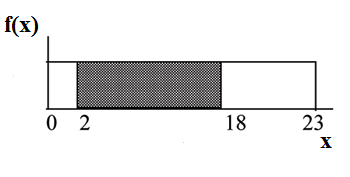
Find the 90th percentile for an eight week old baby's smiling time.
Ninety percent of the smiling times fall below the 90th percentile, , so
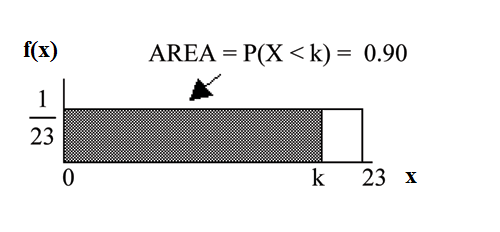
Find the probability that a random eight week old baby smiles more than 12 seconds KNOWING that the baby smiles MORE THAN 8 SECONDS .
Find There are two ways to do the problem. For the first way , use the fact that this is a conditional and changes the sample space. The graph illustrates the new sample space. You already know the baby smiled morethan 8 seconds.
Write a new :
for
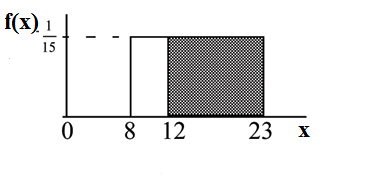
For the second way, use the conditional formula from Probability Topics with the original distribution ~ :
For this problem, is and is .
So,
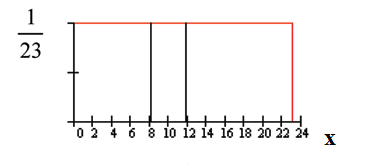
Uniform : The amount of time, in minutes, that a person must wait for a bus is uniformly distributed between 0 and 15 minutes, inclusive.
What is the probability that a person waits fewer than 12.5 minutes?
Let = the number of minutes a person must wait for a bus. = 0 and = 15. . Write the probability density function. for .
Find . Draw a graph.
The probability a person waits less than 12.5 minutes is 0.8333.
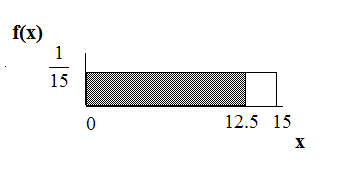
On the average, how long must a person wait?
Find the mean, , and the standard deviation, .
. On the average, a person must wait 7.5 minutes.
. The Standard deviation is 4.3 minutes.
Ninety percent of the time, the time a person must wait falls below what value?
Find the 90th percentile. Draw a graph. Let = the 90th percentile.
is sometimes called a critical value.
The 90th percentile is 13.5 minutes. Ninety percent of the time, a person must wait at most 13.5 minutes.
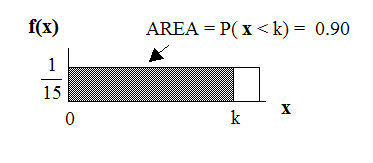

Notification Switch
Would you like to follow the 'Collaborative statistics' conversation and receive update notifications?